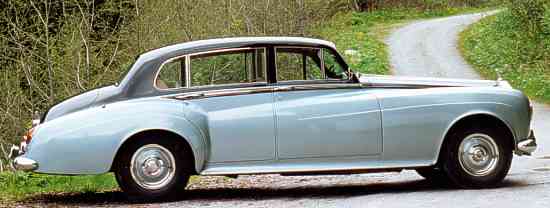
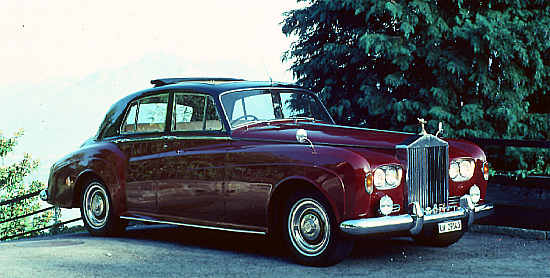
by Henry Elders
Maybe it seems obvious that a man as rich as Harry would have some pricey and elegant toys, but this particular part of the Harry story has always nagged at me. We aren't told his surname, but we know the model of his car and the make of his private jet:
Ned.5: (4) And Harry drove right into the front yard, (5) In a Silver Cloud, (6) And jumped out, saying, Cheer up, everybody! (7) I am the One you have been waiting for.It adds color, of course, and there's no reason not to know some specifics about Harry's possessions, but it still seems odd, as if there's something else we're supposed to infer from the information. Our attention is repeatedly directed to these props. For example, both the car and the plane are involved in incidents that make reference to the miracles of Jesus. It is the trunk of the Silver Cloud which contains the papers and bowls that transform a few seeds and stems and a handful of cheese curls into a hippie banquet akin to the loaves and fishes of the New Testament. The Learjet stands in for the fishing boat of the gospels as Harry calms the storm of fear that grips his disciples during a rough flight over the Rockies. Both are also included in specific reworkings by Harry of notable sayings of Jesus Christ:Willie.46: (16) And Harry said to the children, Behold. Here is one who follows me, (17) And he will be called Lucky, (18) And shall come with me in my Learjet, (19) This very day.
Vinnie.48: (12) Put not your trust in the mercy of men, (13) But in the steadfast nature of bulletproof glass, (14) Carbon-steel door locks, (15) And forged armor plating, (16) Which are the first options I check when ordering a new Silver Cloud.The continual mentions make it seem that the car and the plane are more than props, that they are somehow inextricably bound up in Harry's identity, whatever that identity ultimately proves to be.Vinnie.32: (11)...Come with me and I will show you how to shoot fish in a barrel, (12) Which I will do while entertaining you in my Silver Cloud, (13) And my Learjet...
But do we have anything more to go on here than intimations? Or is this an instance in which the book's scriptural manner makes something sound important when it isn't? What if it's simple reporting? A Silver Cloud and a Learjet were witnessed by the writers of Harry's gospel, and so that's what they documented. Is this plausible? We can check on this.
The Silver Cloud is a model of Rolls Royce (though, curiously, this name is never mentioned in TBB). Below are two photos showing a Silver Cloud. It is instantly recognizable.


Is there any reason Harry wouldn't have had one of these exotic luxury cars? Not necessarily, but there is a small inconsistency. The Rolls Royce Silver Cloud was manufactured from 1956 to 1966. (There were three successive versions: the Silver Cloud, the Silver Cloud II, and the Silver Cloud III.) Harry's first appearances in public occur no earlier than 1970. By the time he made his remarks about bulletproof glass and carbon steel door locks, it was no longer possible to order a new Silver Cloud. The successor car, shown below, was called the Silver Shadow. The possibility exists that the car referred to in the Present Testament as a Silver Cloud was, in fact, a Silver Shadow. It's hard to imagine Harry equipping himself for his entrance onto the national stage in 1970 with a used car. Or are we supposed to think that Harry simply kept the car he'd bought back in 1966 for his rockstar-like tour of the nation....?
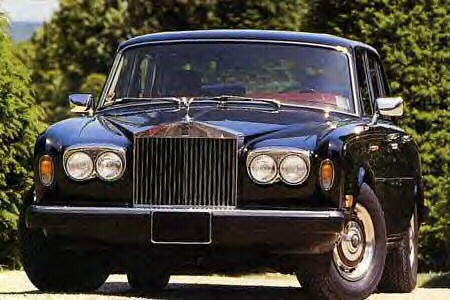
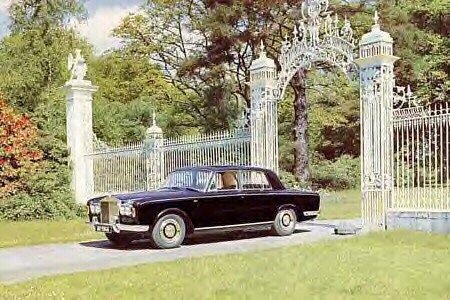
Another possible candidate for Harry's wheels is the Silver Phantom VI, a very-low-production, long-wheelbase version of the Silver Cloud used principally by members of the British royal family and other landed gentry. Designed to be fitted with custom coachwork and piloted by a chauffeur, the Phantom would have been a nice accessory for the white-suited one. But that's not what the text tells us he had. (A remote possibility not worth exploring is the Corniche, a two-door coupe that was available as a convertible; it might have been used during the entrance to Philadelphia, but Harry would hardly have undertaken a road trip in a two-door.)
Yes, I know it sounds like nitpicking, and what does it matter anyway? But that's the reason for looking into the facts, to see if there is something of significance hiding there. And there is something of significance regarding TBB's use of Rolls Royce model names, but before we get into that, it's appropriate to ask the same question about the Learjet. Did it exist in 1970? The answer is yes. The Learjet Model 25 was manufactured from 1966 to 1982. So, no problem, right? Wrong.
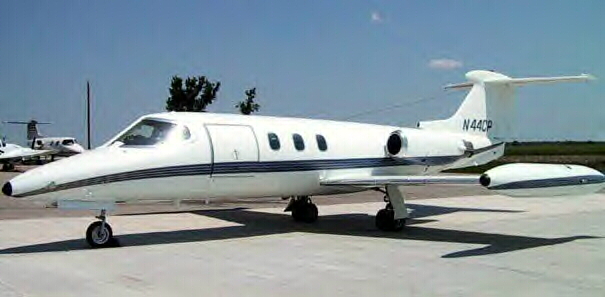
Above is a picture of the Model 25. Do you detect any problem? Below are two photos of the Model 25's interior. Now do you see a problem? According to the manufacturer's specifications, the Model 25 was a six-to-eight seat aircraft. It couldn't possibly have taken off with, or even held, the 15-20 passengers routinely described by the gospels: Harry, his pilot, 12 followers, and assorted young women, including the "Learjet twins."
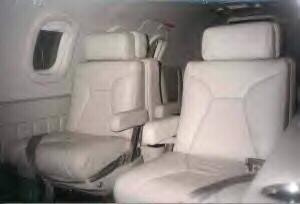
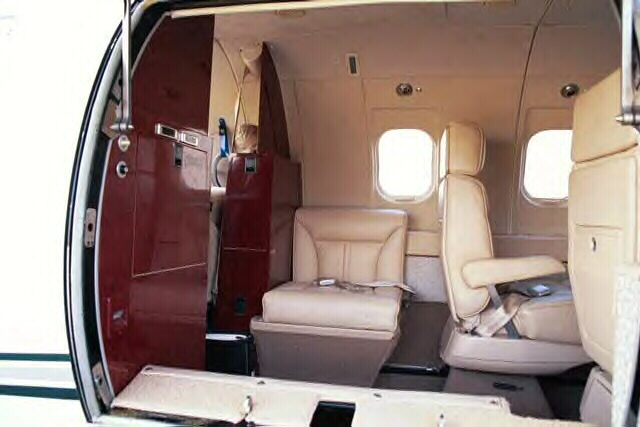
Are we to extrapolate from this circumstance another variation of the 'loaves-and-fishes' miracle? Harry can fit as many passengers into his Learjet as he desires? Or is it rather the case that Harry owned a larger jet -- say a Gulfstream II -- but for reasons we should inquire into the gospel writers preferred to call it by the name Learjet? If so, what particular meaning mandates the use of this name?
Without more of the Rolls Royce connection to pursue, we might simply acknowledge the Learjet puzzle and move on. But the Rolls Royce motif is placed front and center with TBB's version of Pentecost. In Exploits, the disciples do not experience an infusion of the holy spirit, but a far more material gift:
Exploits.6: (3) And one week later we gathered again,(4) In the same place, (5) At the same time, (6) And waited for Harry to come through, (7) Which he did, (8) About the sixth hour, (9) When Lucky looked out the window and saw eleven Silver Ghosts driving into the parking lot, (10) And all of them were being driven by Angels.A satiric pun on 'Holy Ghost' to be enjoyed and forgotten? Or is there a riddle we are supposed to detect and understand? In practical terms, the Silver Ghosts represent a fairly significant anachronism. If Harry is providing the followers with transportation for the evangelical chores he has wished on them, why would he select cars that were manufactured between the years 1907 and 1925? This website includes a marvelous closeup photograph of a Silver Ghost:
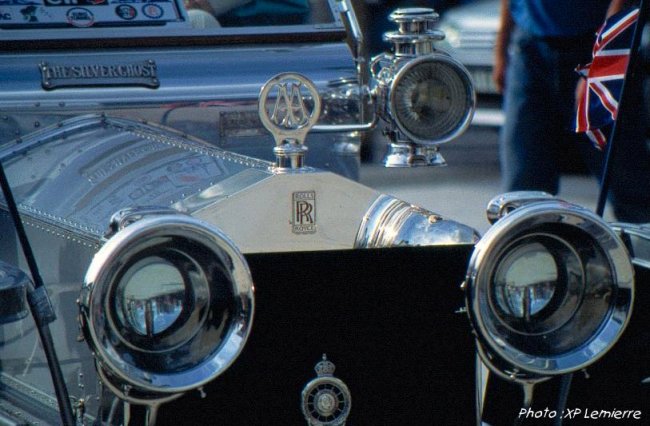
No doubt it's a superb vehicle for a parade, but it's absurd as a transcontinental campaigning platform. More seriously, it is esthetically wrong for the job at hand. Harry is projecting his new 'Way" out into the world, asking one and all to turn their backs on the past and literally 'wash their hands' of tradition, nobility, and duty. Of all available cars, why would he choose as the vehicle for his apostles the one that represents the purest embodiment of all he is eschewing? The Silver Ghost has a unique history, and it is a history that resonates with tradition, nobility, and duty. Something else must be going on here.
I believe that the car which Harry owned was a Rolls Royce Silver Shadow or Silver Phantom VI. I believe the one he later purchased in quantity for his followers was the Silver Shadow. I believe the gospel writers (whoever they were) chose to call these by other names in order to secrete additional information about Harry and his purposes. If this is true, then the names themselves are important.
The name 'Silver Cloud' offers obvious connotations not evoked by 'Silver
Shadow' or 'Silver Phantom.' A cloud moves through the sky; it is a heavenly
object. As the place from which Harry emerges to perform on stage and to
which he returns after the show, the Silver Cloud almost melds with the
Learjet, as in the quote above. The final mention of
the Learjet in the gospels occurs in Ira:
Ira.45. (4) ...there is some footage from a TV station in Rochester, (5) Which was Marisa's hometown, (6) And the place they buried her, (7) After someone brought her back to her parents, (8) In a black Learjet with no markings of any kind.There is an ICR note attached to "Learjet,' which connects to:
Giants.15: (7) When a "deus ex machina" came down from the ceiling and sorted everything out, (8) Punishing the bad characters...For those who need a hand with their Latin, 'deus ex machina' means "the god from the machine." The Silver Cloud and the Learjet are both components of that machine. The names are pointers to divinity. Consider the numerology of this ancient term:
|
|
|
|
|
|
||||
|
|
|
|
|
|
|
|||
|
|
|
|
||||||
|
|
|
|
|
|||||
|
|
|
|
|
|
|
|
|
|
|
|
|
|
|
|
|
|
|
|
|
|
|
|||||||
|
|
|
Is this enough evidence of the Learjet's role? Perhaps. But now that
we have tentative proof of the importance of particular names in and of
themselves, there is an accompanying temptation to look deeper. If we played
the numerology game with Harry's toys,
what might we find?
|
|
|
|
|
|
|
|
|
|
|
|
|
|
|
|
|
|
|
|
|
|
|
|
|
|
|
|
|
|
|
|
|
|
As should be clear from the hyperlink, the two-digit sum of 'CLOUD' scores a direct hit with our chart of numerological meanings. It is, like the name itself, a reference to the divine.
On the other hand, it would appear that we have struck out on the initial sum of SILVER. 85 is not a significant number in the tables we have constructed to help us with TBB numerology. Yet there is another card we can play. The 'V' is directly associated with the Tarot's 21/22 blur. If we accept the interchangeability of these numbers, we can read the V as 21, and our sum becomes 84, which is a significant number, particlarly in the context of "punishing the bad characters."
Added and reduced, our Silver Cloud becomes:
|
|
|
|
|
|
|
|
|
|
|
|
|
|
|
|
|
|
|
|
|
|
|
|
It's possible to see a certain in logic in both choices here, but it's
also hard to miss the direct correlation to the Silver Ghosts (i.e., 4)
if we accept the alternative treatment of 'silver.' Let's look at this
one in more detail:
|
|
|
|
|
|
|
|
|
|
|
|
|
|
|
|
|
|
|
|
|
Note the clear if ephemeral reappearance of the incredibly significant 22 in this tableau, as well as other numbers of both universal and TBB-specific import.
It is possible to integrate the meanings of all these numbers into a
coherent statement about what is occurring in the ministry of Harry. Would
this be the case if Harry's car had been a Silver Phantom?
|
|
|
|
|
|
|
|
|
|
|
|
|
|
|
|
|
|
|
|
Or, more accurately, a Silver Phantom VI:
|
|
|
|
|
|
|
|
|
|
|
|
|
|
|
|
|
|
|
|
|
|
This gives us four versions of the total to consider:
|
|
|
|
|
|
|
|
|
|
|
|
|
|
|
|
|
|
|
|
|
|
|
|
|
|
|
|
|
|
|
|
|
|
Of all these choices, the most intriguing is the fourth. The other three
offer relevant numbers, but nothing new in the way of ideas. The fourth,
on the other hand, yields a different perspective:
|
|
|
|
|
|
|
|
|
|
|
|
|
|
|
|
|
|
|
|
|
|
|
This is striking enough to be the reason the Silver Phantom VI was not named in text. The number 24 has been a subtext (or should that be subnumber?) in the story of Harry from the beginning; that is, from the date of his birth. In a sense it constitutes his mortal identity, which is numerically commented on in multiple ways throughout the book (See, for example, Dav.15.9, which gives us the identity of the actor who played Jesus in the movies.) Coupled with the glimmering 33, which portends a sacrifice to come, this intermediate total makes real sense; it is simply not the sense which the gospel writers wish to implant here. What relation that sense bears to the truth if Harry's automobile was indeed a Silver Phantom makes for an interesting study.
I will leave that to others for now, though, and move on instead to
the Silver Ghosts already prefigured in our Silver Cloud.
|
|
|
|
|
|
|
|
|
|
|
|
|
|
|
|
When we put the whole name together, we get:
|
|
|
|
|
|
|
|
|
|
|
|
|
|
|
|
|
|
|
|
|
|
Or:
|
|
|
|
|
|
|
|
|
|
|
|
|
|
|
|
|
|
|
|
|
|
Note that 'GHOST' is conjuring, at least in passing, a sinister image that many associate with Harry anyway. Apart from this, the first version above would seem to be repeating the basic message of divinity associated with 10 and 1. The second version is certainly more interesting, offering a nearly full complement of significant numbers. It's also more sinister, reducing finally to the ICENINE of Pspeciastes and the preoccupation with The Self addressed in the Table of Harrier Days. Compared with the Silver Cloud, the Silver Ghost seems to mark a sea change in imagery, which is consistent with the shift in tone from the gospels to the book of Exploits. If there is divinity at work here, it is an angry divinity.
An obvious question, though, is why the Silver Ghost should be preferable to the Silver Shadow that would almost certainly have been the actual vehicle bestowed upon the followers. Harry's own Silver Cloud is understandable for the connotation of sky noted above, as well as the fact that of all Rolls Royce models, the Silver Cloud is the only named model extant at the time of Harry which does not sport a post-death moniker of some kind (excepting a short-lived export hybrid called the Silver Dawn). The Silver Shadow, however, would have had a nice ring to it in this context (even if one is reluctant to second-guess the author). Is it, perhaps, a numerological failure?
|
|
|
|
|
|
|
|
|
|
|
|
|
|
|
|
|
|
Well, that certainly seems promising. When we add and reduce, we get:
|
|
|
|
|
|
|
|
|
|
|
|
|
|
|
|
|
|
|
|
|
|
|
Or:
|
|
|
|
|
|
|
|
|
|
|
|
|
|
|
|
|
|
|
|
|
|
|
This time, both alternatives are intriguing. The first offers us a glimpse of El Dorado, which is tantalizing in light of the fate of Harry's followers, individually and collectively. And there's a heavy presence of Harry himself, thanks to the effects of the 'blur' and the 'SHADOW.'
The second version is duller at first glance -- another reprise of divinity yoked to the nefarious 19 of Pspeciastes. However, the appearance of 154 here is fascinating. That's the number of chapters in the Book of Yanks. How fitting.
I think it's reasonable to conclude that the Silver Shadow name is not a numerological failure. Its effect is so strong that having once seen it, I have come to regard it as an ever-present shadow of the Silver Ghost actually named in text. I would also add that I believe it's quite fair to perform such a grafting exercise: elsewhere in this website, we have seen admirable work which demonstrates that TBB does intend us to seek out the original sources which have been modified, transmuted, vandalized, or otherwise filtered from view in such books as Psomethings and Dave. Each alters our interpretation of the other, often permanently.
Having said all this, though, I also conclude that there is still something in the Silver Ghost name that makes it superior to Silver Shadow. It leads finally to 9, the number of ultimate ice, and it also references the number 6, which hearkens to the past (i.e., the Past Testament) in a figurative sense just as the Silver Ghost does in a literal sense. This suggests that it's time to look even deeper at the Silver Ghost itself.
More than a classic car, the Silver Ghost is a cultural icon. It represents one of the early pinnacles of the industrial age. It was faster, quieter, and more durable than most believed an automobile could be. Therefore, it was sought after as a status symbol by kings, emperors, czars, and tyrants. In its day stood as a symbol of Britain during the exact period when that nation passed from preeminent power in the world into decline. Its production history (6173 units over 19 years... have fun!) straddles World War I, the Russian Revolution, the birth of aviation, the invention of mass-produced automobiles, the entire lifespan of the Titanic, and multiple other events that were seminal to the history of the 20th century. It's hardly surprising that the Silver Ghost has shared part of its name, and spirit, with every Rolls Royce manufactured since. Spirit?
Shrewd observers will have noticed that the Silver Ghost pictured above does not feature the most celebrated symbol of Rolls Royce motorcars, the dramatic hood ornament known as the Flying Lady or, more correctly, "The Spirit of Ecstasy."
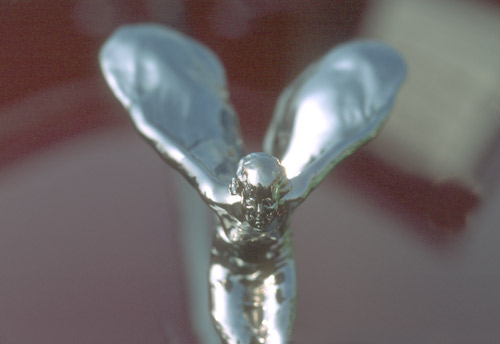
The reason for this is that the ornament was added to the RR legacy early on in the production of the Silver Ghost. As one might expect, this enduring image was not the cold-blooded invention of a crafty marketing exec. There's a story that goes with it, and it's quite an interesting story at that.
For those who failed to read the story all the way to the end, here's the final paragraph:
The woman who had been the
model for the radiator decoration was not to appreciate its success.
Eleanor Thornton lost her
life when, on 30 December 1915, on the SS Persia, while on passage to India,
was torpedoed off Crete
by a German submarine. She had been accompanying Lord Montagu who had
been directed to take over
a command in India. He was thought to have been killed, too, but survived
and
was rescued a few days later
by another ship. On his return to England he read the obituary articles
in the
newspapers about his own
demise.
Lord Mantagu and Eleanor Thornton were lovers obviously. The U-boat
which killed her may very well have been aiming at him. It is this memory
of the wrong person killed which flies on the hood of every Rolls, a true
silver ghost of murdered innocence. Dare I offer the following hint?
|
|
|
|
|
|
|
|
|
|
|
|
|
|
|
|
|
|
|
|
|
|
|
|
|
|
|
|
|
|
|
|
|
|
|
|
|
|
|
|
|
|
Now we may revisit the 6 associated with the Silver Ghost and recall the hearkening back that we spoke of. Are we to hearken all the way back to the 6 of the Tarot, the Lovers? Is Marisa the Silver Ghost sent to haunt the followers, and is Harry the angry Shadow to which that ghost is attached?
By coincidence -- if there are such things as coincidence -- it was
also during the the production of the Silver Ghost that the company logo
underwent a dramatic change, from  to
to  . The reason?
A permanent grief: the death of company co-founder Rolls. Is this not reminiscent
of the color switch from white to black that we have seen in Chapter
45(!) of Ira? Is this the transformation of Harry to shadow?
. The reason?
A permanent grief: the death of company co-founder Rolls. Is this not reminiscent
of the color switch from white to black that we have seen in Chapter
45(!) of Ira? Is this the transformation of Harry to shadow?
The circular nature of 22 has brought
us back one more time to the Learjet. The Learjet that can't physically
be
a Learjet no matter how many times the text tells us it is. It's time to
take a look:
|
|
|
|
|
|
|
|
|
|
|
|
|
|
|
|
|
|
|
|
|
|
|
|
|
|
Note that we have divided Learjet into two words. The manufacturer does
so as well. Added and reduced, these become:
|
|
|
|
|
|
|
|
|
|
|
|
|
|
|
|
|
|
|
|
|
|
|
Appropriately the 17 provides us with an image, The Star, that corresponds
with the heavenly connotation of the Silver Cloud and goes on to suggest
that it is, as we opined above, part of the identity of Harry himself.
But we also know more of what the aircraft's designation had to have been:
|
|
|
|
|
|
|
|
|
|
|
|
|
|
|
|
|
|
|
|
Added and reduced, we have:
| LEAR | = | 36 | = | 9 |
| JET | = | 35 | = | 8 |
| MODEL25 | = | 56 | = | 11 |
| = | 127 | = | 28 | |
| = | 10 | = | 10 |
Compare this with 'Deus Ex Machina" above. We are back to the divine
10 or 1. At this point it's hardly a distortion to consider a slight abbreviation.
How about...
|
|
|
|
|
|
|
|
|
|
|
It's not a distortion because we now understand the fundamental nature of 22, and these numbers have an enormous meaning in TBB. We are being pointed at a TBB whole of some kind here. But what whole. And how do we identify it?
The key, as we might have suspected, is the name. Lear. There's the Lear of Learjet. There's the Lear of Shakespeare (mentioned in Giants.15.24). But there's another unmentioned Lear who comes to mind when we focus on the number 56. That's the number of chapters in Pnotes. This is a book rendered entirely in limericks, the annoying five-line poems which were brought to permanent popularity by the Biritish writer and illustrator Edward Lear. His name is synonymous with nonsense literature, and he is often mentioned in company with Lewis Carroll, who does merit a mention in TBB (actually, significantly more than a mention if you delve into the ICR). Thus, the name Lear should connect us immediately to Pnotes, even without the hints we've uncovered here.
Can we nail down the connection? Probably not. But it's worth pointing out that the final version of Lear's definitive work of children literature, A Book of Nonsense, contains 112 limericks. Pnotes contains 56 limericks -- exactly half that number. Now why is it that we are twice introduced to the Learjet twins? Are we being asked to perform the doubling (i.e., the twinning) of Pnotes to behold an homage to Mr. Lear? You'll have to decide that one for yourself.
Nor can we nail down the precise reason for the apparent highlighting of a connection between Harry and Pnotes. There's plenty of room for useful speculation, however. The Pnotes of the Bluff King (the full title) is itself a riddle begging to be deciphered. The clue we need is provided by Harry in Ira:
Ira27: (20) Once, though, someone almost put one over on Harry, (21) Because when he asked if they'd read it (The Bible), (22) They said right back, "Have you?" (23) But it took Harry only half a second to smile, (24) And then he said, Nah. (25) But I've read the Cliff Notes.Pnotes is notes. A bluff is a cliff. And a king is a monarch. It's the book of Cliffs and Monarch notes. Is that all? Hardly. It's also a treasure chest of the stories people have been telling each other for thousands of years. Here they are stripped of everything but the bare bones of plot. Yet these are still the bones for every story we tell. That's why so many of them repeat their structures almost exactly. Pnotes is showing us the structural echoes that exist among the stories that are told most often because they are the most appealing or the most important.
Is this the baggage (or treasure) that Harry carries, uses, and even withdraws to for comfort and recreation? Are these the books, poems, and plays that contain all essential elements of his own life, and by implication, ours too? Is this ageless literature somehow the machine through which the divine intercedes in human affairs?
Answers to such questions are subjective. I will say, though, that if Harry has actually read all the works skewered in Pnotes, he is by no means an ignoramus.
And if some of our other speculations are close to being accurate, he
is by no means heartless either. The concealed story of the gospels may
be the real depth of Harry's love for Marisa. Lest anyone believe we have
made this up out of numerological nonsense, we can point to another ICR
note in Ira 45. Attached to Marisa's name is a reference
to Psomething 42:
It was many and many a year ago, (2) In a smething by the sea, (3) something something lived, (4) By the name of Annabel Lee. (5) Something something, (6) Something. (7) Real sad
This pathetic scrap of memory filters the original poem that ends
with these lines:
The Poe connection is relevant here, because as with other items we have discussed, there is reason to consider another piece of the puzzle that is the more notable for not having been mentioned in TBB. Consider that Poe is heavily referenced in TBB. His life story is summarized in Yanks. He is possibly the only author who is represented in four out of five of the P-Books, appearing in Psayings, Psomethings, Pnotes, and Pspeciastes. Why, then, has TBB omitted all reference to the poem that perhaps more than any other resounds with the presence and nature of Harry as we have explored it here?And neither the angels in heaven above,
Nor the demons down under the sea,
Can ever dissever my soul from the soul
Of the beautiful Annabel Lee.For the moon never beams without bringing me dreams
Of the beautiful Annabel Lee;
And the stars never rise but I feel the bright eyes
Of the beautiful Annabel Lee;
And so, all the night-tide, I lie down by the side
Of my darling—my darling—my life, and my bride,
In her sepulchre there by the sea,
In her tomb by the sounding sea.
Perhaps it is just the shadow of this poem that rides along with the written text of Harry's story, and the unwritten numbers of his story, in the miraculous toys we know as the Leajet, the Silver Cloud, and the Silver Ghosts.Gaily bedight,ELDORADO
A gallant knight,
In sunshine and in shadow,
Journeyed long,
Singing a song,
In search of Eldorado.But he grew old—
This knight so bold—
And o'er his heart a shadow
Fell as he found
No spot of ground
That looked like Eldorado.And when his strength
Failed him at length,
He met a pilgrim shadow—
"Shadow," said he,
"Where can it be—
This land of Eldorado?""Over the Mountains
Of the Moon,
Through the Valley of the Shadow,
Ride, boldly ride,"
The shade replied—
"If you seek for Eldorado!"